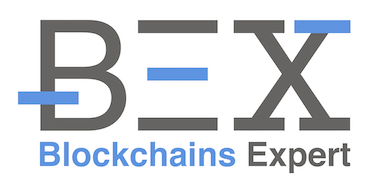While we are currently witnessing a rally in the number of ICOs on Utility Tokens, many experts believe that the coming wave of ICO will concern Security Tokens and will be much larger. Why do they think Security Tokens will be so successful? This is what we will try to clarify by first defining these two types of tokens.
Utility Tokens
As its name suggests, Utility Tokens are tokens that have a role in the functioning of a decentralized ecosystem based on a blockchain. As we have already discussed in detail in this article, these functions are extremely varied to such an extent that they are difficult to categorize. Their role in the ecosystem may be more or less important, but without them the network should not be able to function.
Without bitcoin, network members could not exchange value between themselves and miners could not be paid.
This function is not always so obvious, especially when the tokens are issued by protocols stored on a blockchain that does not belong to them (Ethereum for example). In this case, all the mechanics of the blockchain are remunerated in Ether whereas the tokens issued by the decentralized application can be used to operate the application. This is, for example, the case of Augur using Ether, but also the REP for its operation.

Security Tokens
Security Tokens are intended to digitize physical assets or not without having a function in the development of a decentralized network. These tokens are generally recorded in smart contracts and will therefore offer all the advantages of the blockchain on the internet (security, flexibility, speed of circulation, transparency) to real-world goods that are physical (paintings, concert tickets .. .) or not (music, films, financial assets, titles of ownership, patents …). We will actually assist to the massive tokenization of the real to facilitate the exchange on the internet.
Tokenization of stocks and bonds could, for example, allow traditional companies to raise funds without having to take out a loan or make an IPO. Many companies whose business model has nothing to do with blockchain technologies already organize ICOs to finance themselves. These financial securities would have the form and thus the flexibility of the tokens but would offer the same types of financial and legal rights as traditional stocks and bonds. The issuing entities of these tokens can naturally adjust the legal and financial rights as they intend.

The Security and Exchange Commission, the US Stock Exchange Constable, uses a number of criteria to determine whether a token is a Security Token and as such must be subject to the same transparency and registration requirements as any other financial asset.
These criteria are defined in the “Howey test”. The “Howey test” is a test created by the Supreme Court to determine whether certain transactions qualify as “investment contracts” under the Securities Act of 1933 and the Securities Exchange Act of 1934. A financial asset is an investment contract when the following four elements exist:
- Money investment
- In a joint venture
- With profit expectations
- For the efforts of others
A number of creators of ICO have discovered this interpretation at their expense, seeing the chips they issued requalified in the investment contract. In most cases, the rules applicable to takeover bids for financial assets had not been respected, resulting in heavy fines from the SEC. The example of the DAO (Decentralized Autonomous Organization) is probably one of the most explicit.

The differences between utility and security tokens
Unlike Utility Tokens, Security Tokens are a part of the property they represent. If they are shares, Security Tokens represent a share of the capital of companies that issue them.
Utility Tokens, on the other hand, do not confer any governance rights on the ecosystem to which they belong. However, they can, when the mode of consensus chooses is the Proof of Stake or the Delegated Proof of Stake, since it is the possession of tokens which gives access to the rights of mintage or confers a right to vote for the election of ” Witness “. This is, for example, the case for Steemit, Eos or Bitshare.
A consequence of what has just been said is that dividends are only rarely paid to the holders of Utility Tokens. When this is the case, as for Dash or Neo, these dividends are not proportional to the results or the capitalization of the ecosystem.
Finally, the applicable legal regime is different for both types of tokens. In the United States, the SEC requires issuers of Security Tokens to follow the same rules as financial assets falling within the criteria of the Howey Test. It is different in France, where the legislator decided to create an independent regime for Utility and Security Tokens (see Article 26 of the PACTE Act).
Why Security Tokens will know a spring
The question that arises, for example, is why should we use Security Tokens instead of Action or Obligations? Could employees accept to receive Security Tokens rather than shares?
In the world of start-ups as well as large groups, it is very common for employees to receive shares to supplement a cash income and align the interest of the employee with that of the company.
The problem with equities is that their value is not shared until the company does an IPO. But with the increase in private funding in recent years, these operations are carried out more and more later. For example, Drop Box’s IPO came 13 years after its creation. Throughout this period employees who had stock could not resell them on a regulated exchange.
It is this liquidity problem that tokens can solve and probably revolutionize the way employees are paid. Listing a token on an exchange is indeed much simpler and in some cases almost instantaneous. The prestige and requirements of crypto trading vary a lot, but if you want to list a token on an exchange such as Liqui and put them on sale, it is possible.

The tokens will, therefore, help to streamline the payment of employees in with share equity. This is certainly the bet that some start-up, such as Quidli, have done. Quidli is indeed a French start-up supported by Consensis, whose objective is to offer traditional companies solutions to tomkenize their assets in order to facilitate the circulation.
From this point of view, Security Tokens appear as an excellent way to raise funds and distribute them among employees of the company.
Another significant advantage of Security Tokens lies in the possibility of valuing them using the valuation tools traditionally used for stocks and bonds. In a previous article, we talked about the complexity of valuing utility tokens because of the novelty and diversity of their business models. This problem does not exist with Security Tokens, which makes them much safer and easier to market. It should be noted, however, that the price of Utility tokens will be determined on crypto exchanges as for Utility Tokens, according to the laws of supply and demand, but it will be possible to estimate with much more precision if they are over or under-valued through valuing their the underlying asset they represent.
Of course, this is only an example and this logic can apply to all existing assets, opportunities are unlimited.
Follow me on Social media


![Ledger Nano S review – The Safe of the futur [2020] Ledger Nano S avis](https://www.blockchains-expert.com/wp-content/uploads/2019/10/Ledger-218x150.jpg)

![Binance review: all you need to know [2020] binance review](https://www.blockchains-expert.com/wp-content/uploads/2019/09/binance-218x150.jpg)













![Kraken review: all you need to know [updated 2020]](https://www.blockchains-expert.com/wp-content/uploads/2020/01/kraken-review-2019-4-780x405-100x70.png)
![Ledger Nano S review – The Safe of the futur [2020] Ledger Nano S avis](https://www.blockchains-expert.com/wp-content/uploads/2019/10/Ledger-100x70.jpg)

![Binance review: all you need to know [2020] binance review](https://www.blockchains-expert.com/wp-content/uploads/2019/09/binance-100x70.jpg)


![local bitcoins review – Read this before using [Full Guide 2020] LocalBitcoin avis](https://www.blockchains-expert.com/wp-content/uploads/2019/05/LocalBitcoins-100x70.jpg)
![Bitcoin Value in Dollar – how to analyze and predict it? [Ultimate guide 2020] Bitcoin gold](https://www.blockchains-expert.com/wp-content/uploads/2019/03/Bitcoin-gold-100x70.jpg)





